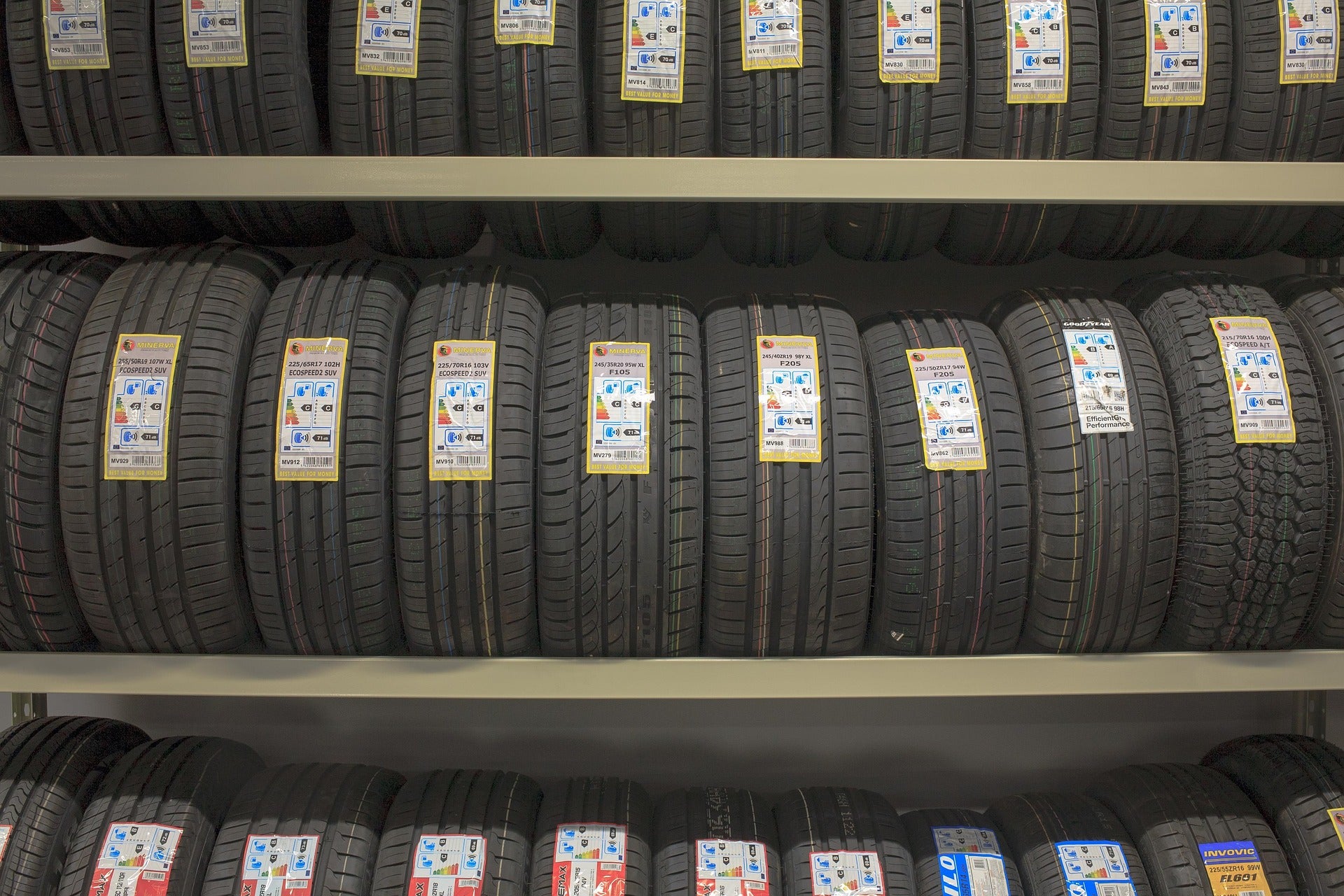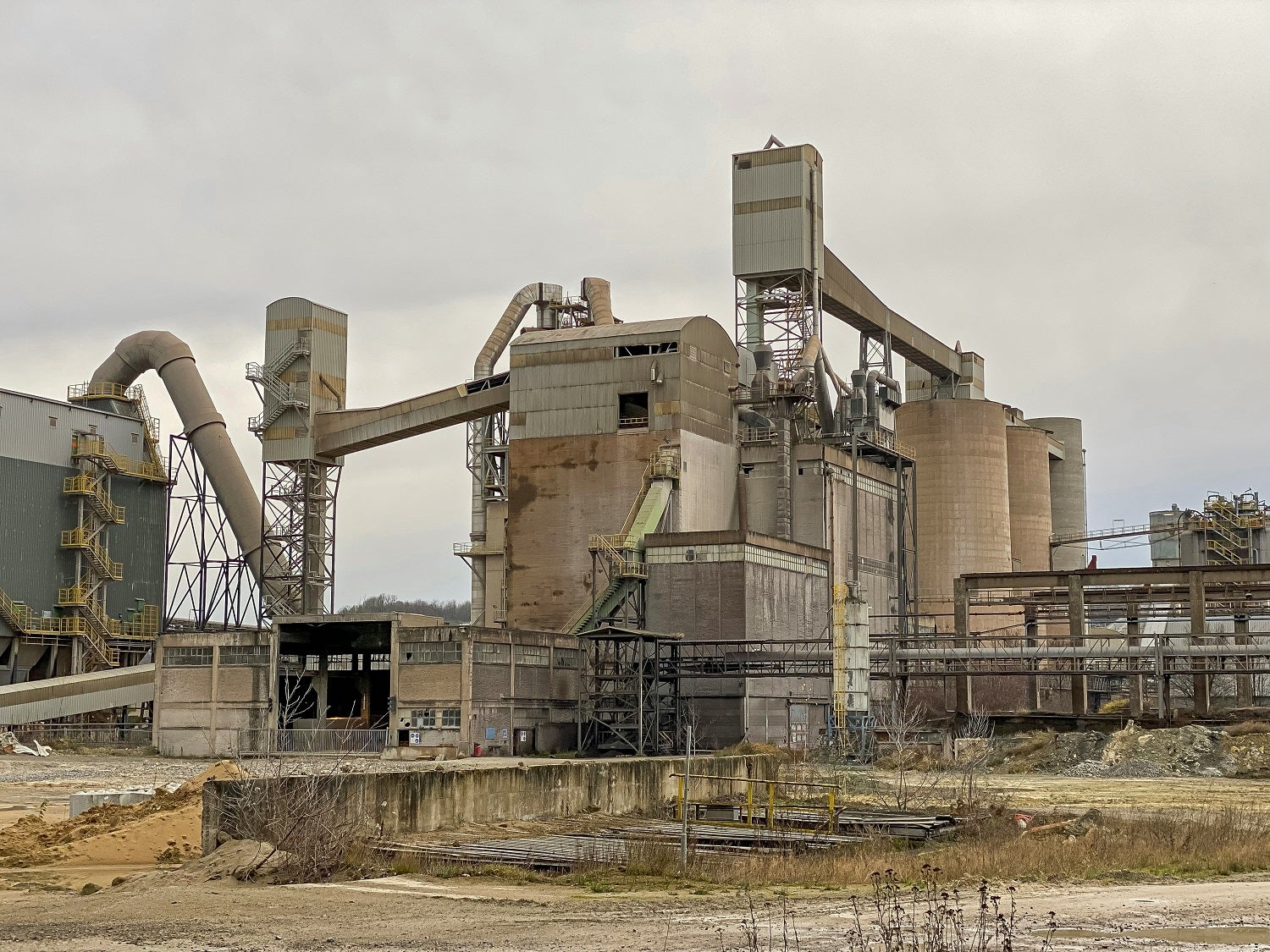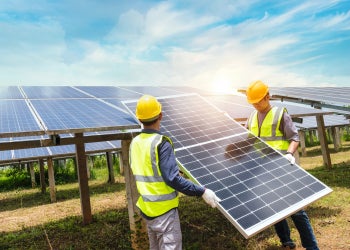Saudi Binladin Group makes a comeback
8 November 2024

Register for MEED's 14-day trial access
The Saudi Binladin Group (SBG) has undergone a dramatic revival over the past year with the award of high-profile construction contracts and financial support from the Saudi government.
Founded in 1931 by Muhammad Bin Ladin, SBG grew to become Saudi Arabia’s largest construction company with a reputation for delivering large programmes of work for the government and leading figures within Saudi Arabia.
SBG’s fortunes declined following the oil price crash of 2014-15 and the collapse of an SBG crane at the Grand Mosque of Mecca, which resulted in a temporary ban on the contractor taking on new projects.
As its finances deteriorated, SBG hired US-headquartered Houlihan Lokey as the adviser for its SR56.4bn ($15bn) debt restructuring programme in April 2020.
These challenges combined meant the contractor was unable to regain its position as the go-to contractor for the Saudi Arabian government.
Financial support
Financially, the big turning point came in late October when Saudi Arabia’s National Debt Management Centre (NDMC) announced that it had completed arranging a syndicated loan facility for the Ministry of Finance to support SBG.
In an official statement, NDMC said that the loan facility amounting to SR23.3bn ($6bn) has been secured with several local and international banks.
The support includes a series of arrangements to settle the firm’s outstanding amount with banks, provide loans to the firm and potentially increase the government’s stake in the company.
The move to announce financial support follows the Ministry of Finance’s announcement in July, which outlined an intention to improve SBG’s financial capacity. The injection of cash into the firm will also enable it to improve its financing for various other projects in the kingdom.
The government has a vested interest in SBG’s fortunes. In 2019, a parent company known as Binladin International Holding Group (BIHG) was formed. That entity is owned by Istidama, an investment arm of the Ministry of Finance. The remaining 63.78% is owned by the Binladin Company for Development & Commercial Investment. Its subsidiaries include SBG.
In addition to SBG’s finances being shored up, over the past year the contractor’s orderbook has grown with several high-profile awards.
Jeddah Tower
While the financial turning point came at the end of October, the key moment symbolically came on 2 October, when SBG was appointed to complete the world’s tallest tower, the 1,000-metre-plus Jeddah Tower.
SBG was the original contractor on the project before construction work stalled in 2018. This left the tower’s superstructure about one-third complete, with 63 floors built out of 157.
The SR7.2bn ($2bn) contract award to complete the record-breaking structure took many in the market by surprise after it was reported that a joint venture of China State Construction Engineering Corporation and the local El-Seif Engineering Contracting was the frontrunner for the contract.
The Ministry of Finance’s support was crucial for the project client, giving the contract financial credibility. This allowed it to put together a winning proposal to complete the tower with a reduced programme and a more competitive price.
There were also practical reasons for selecting the original contractor on the project, according to Kingdom Holding’s CEO Talal Ibrahim Almaiman. SBG already has offices established on-site and, as a Jeddah-based company with a long history of delivering major projects in Saudi Arabia, it has well-established connections with the local supply chain.
The Jeddah Tower award followed important contract awards a year earlier. In October 2023, SBG won contracts totalling about $1.3bn from Saudi Entertainment Ventures (Seven), a wholly owned subsidiary of the Public Investment Fund (PIF).
The contracts were awarded to build Seven’s two entertainment destinations in the Dammam and Alkhobar regions in the kingdom’s eastern province.
The entertainment complex in Alkhobar will be built on reclaimed land on the waterfront. It will span around 300,000 square metres (sq m) and is also known as “The Waves”.
The Dammam entertainment complex spans 360,000 sq m and will also be built on reclaimed land on the Dammam waterfront.
SBG also has historical work. It is delivering the third Mecca Grand Mosque expansion programme after resuming construction activities at the project site following this year’s Hajj pilgrimage.
The first section is understood to include expansion works for the main building, with the second and third sections of the programme covering ancillary, security, media, hotel and hospital buildings, among others.
The programme to expand the Mecca Grand Mosque was reportedly launched in 2011 by the late King Abdullah Bin Abdulaziz. It faced delays following the crane collapse at the mosque in September 2015, with work resuming in late 2019.
King Salman Bin Abdulaziz Al-Saud launched five projects in July 2015 as part of the third expansion programme. These projects covered an estimated built-up area of 1.47 million sq m.
Exclusive from Meed
-
 Chinese firm wins Emaar Address Zabeel contract
Chinese firm wins Emaar Address Zabeel contract17 October 2025
-
 Chinese company to build tyre plant in Morocco
Chinese company to build tyre plant in Morocco17 October 2025
-
 Two cement plants to be built in Egypt
Two cement plants to be built in Egypt17 October 2025
-
 Kuwaiti contractor submits lowest bid for oil project
Kuwaiti contractor submits lowest bid for oil project17 October 2025
-
 Power market reshapes contractor landscape
Power market reshapes contractor landscape16 October 2025
All of this is only 1% of what MEED.com has to offer
Subscribe now and unlock all the 153,671 articles on MEED.com
- All the latest news, data, and market intelligence across MENA at your fingerprints
- First-hand updates and inside information on projects, clients and competitors that matter to you
- 20 years' archive of information, data, and news for you to access at your convenience
- Strategize to succeed and minimise risks with timely analysis of current and future market trends

Related Articles
-
 Chinese firm wins Emaar Address Zabeel contract
Chinese firm wins Emaar Address Zabeel contract17 October 2025

Beijing-headquartered China State Construction Engineering Corporation has been awarded a contract by UAE-based developer Emaar Properties to build a multi-tower complex in Dubai’s Zabeel area called Address Residences Zabeel.
The development will comprise four towers offering more than 1,700 one- to four-bedroom residential units, 2,600 square metres of retail space and parking for 2,000 cars. The towers will be 50, 58, 52 and 54 storeys high.
The project is expected to be completed in 2027.
The latest contract award from Emaar follows the start of construction activity at the Dubai Square mall, which will be connected to the upcoming Dubai Creek Harbour tower within Emaar's Dubai Creek Harbour development.
MEED recently reported that Dubai-based contractor Dutco Construction had started mobilising for the main works on the project.
Dubai’s heightened real estate activity has led to record-breaking announcements from several UAE-based real estate firms.
In February this year, Emaar reported a total revenue of AED19.1bn ($5.2bn) in 2024, a 61% increase from 2023. It said it recorded a net profit before tax of about AED10.2bn ($2.8bn), a 20% rise compared to 2023.
According to data published earlier this year by the Emirates News Agency (Wam), the total value of real estate transactions in the UAE reached AED893bn, with more than 331,300 transactions recorded last year.
UK analytics firm GlobalData forecasts that the UAE construction industry will register an annual growth of 3.9% in 2025-27, supported by investments in infrastructure, renewable energy, oil and gas, housing, industrial and tourism projects.
 READ THE OCTOBER 2025 MEED BUSINESS REVIEW – click here to view PDF
READ THE OCTOBER 2025 MEED BUSINESS REVIEW – click here to view PDFPrivate sector takes on expanded role; Riyadh shifts towards strategic expenditure; MEED’s 2025 power developer ranking
Distributed to senior decision-makers in the region and around the world, the October 2025 edition of MEED Business Review includes:
> AGENDA 1: A new dawn for PPPs> AGENDA 2: GCC pushes PPPs to deliver $70bn pipeline> POWER DEVELOPER RANKING: Acwa Power consolidates power sector dominance> IPPs: GCC enters pivotal year for IPPs> ACQUISITION: Wood takeover could boost Sidara profits> INTERVIEW: SLB strives to boost regional standing> SAUDI MARKET FOCUS: Riyadh strives for sustainable growthTo see previous issues of MEED Business Review, please click herehttps://image.digitalinsightresearch.in/uploads/NewsArticle/14892821/main.jpg -
 Chinese company to build tyre plant in Morocco
Chinese company to build tyre plant in Morocco17 October 2025
Chinese tyre manufacturer Shandong Yongsheng Rubber has launched a $675m project to build a tyre factory in Morocco.
The plant will initially produce 6 million semi-steel radial tyres annually, with plans to gradually increase capacity to 12 million units per year, according to a company statement.
The tyres manufactured will be primarily destined for export to European, African and American markets.
Shandong Yongsheng Rubber also plans to capitalise on preferential tariffs offered through Morocco’s free trade agreements with numerous jurisdictions, including the European Union, the US and several West African countries, the company said.
The factory, to be developed in Morocco’s Diouch province, will produce tyres that meet technical standards for developed markets.
Preliminary administrative procedures, including regulatory registration, have already been completed for the project.
Increased investment
Chinese companies in the automotive sector have increased investments in Morocco and neighbouring Algeria in recent years.
In August, Chinese automotive interior materials manufacturer Kuntai announced plans to establish a production facility in Morocco through its subsidiary Kuntai Hongjing.
The project represents a total investment of RMB100m ($13.7m) and will focus on manufacturing car floor mats and carpets for vehicles.
In March, Great Wall Motor, one of China’s top 10 car manufacturers, announced plans to build its first factory in Algeria, joining other companies in the country, including Fiat, Peugeot and Kia.
Last November, the Algerian Ministry of Industry & Pharmaceutical Production announced that it had granted permits for six new vehicle manufacturing factories in the country.
In March 2023, Dutch carmaker Stellantis announced plans to spend more than €200m ($213m) to manufacture several Fiat models in Algeria.
https://image.digitalinsightresearch.in/uploads/NewsArticle/14889877/main.jpg -
 Two cement plants to be built in Egypt
Two cement plants to be built in Egypt17 October 2025
Egypt is planning to issue two new cement plant licences before the end of the year, with the aim of cubing rising prices in the country.
The two new licences were approved during a recent meeting between local cement producers and Kamel El-Wazir, Egypt’s minister of trade and industry, according to a news report by Asharq Business, which cited an anonymous official.
“The two permits are expected to be released before the end of the year, with each licence including its own production line,” the official said.
The two new plants are expected to add 1.5-2 million tonnes a year of production to Egypt’s cement output.
The cement project approvals from Egypt’s government come amid heightened concerns about the cost of construction projects in the country.
Importing materials and equipment for projects has become increasingly expensive over recent years due to Egypt’s currency weakening. Over the past 12 months, the price of cement has increased by almost 50%.
https://image.digitalinsightresearch.in/uploads/NewsArticle/14889881/main2139.jpg -
 Kuwaiti contractor submits lowest bid for oil project
Kuwaiti contractor submits lowest bid for oil project17 October 2025
Ahmadi-based Spetco International has submitted a low bid of KD88.2m ($288.7m) for the contract to develop the planned Mutriba remote boosting facility in Kuwait.
The project was originally tendered by Kuwait Oil Company (KOC) earlier this year, with a bid submission deadline of 29 June.
The deadline was extended several times before three Kuwait-based companies submitted bids.
The details of the bids submitted for the project are as follows:
- Spetco International – KD88,209,236 ($288.7m)
- Combined Group Contracting – KD123,000,000 ($402.5m)
- Alghanim International General Trading & Contracting – KD129,450,000 ($423.7m)
The project’s scope includes:
- Development of the Mutriba oil field
- Installation of the degassing station
- Installation of manifolds
- Installation of condensate facilities
- Installation of wellhead separation units
- Installation of the pumping system
- Installation of wellhead facilities
- Installation of oil and gas treatment plants
- Installation of a natural gas liquids plant
- Installation of a water and gas injection plant
- Construction of associated utilities and facilities
The onshore Mutriba oil field is located in northwest Kuwait and is being developed as part of Kuwait’s wider strategy to boost the country’s upstream capacity.
Commercial output from Mutriba officially began on 15 June this year, after several wells were connected to KOC’s production facilities.
The field, in a previously undeveloped part of Kuwait, covers more than 230 square kilometres and lies outside the area of fields already operated by KOC.
In September, Kuwait’s Oil Minister Tareq Al‑Roumi said that the country’s oil production capacity had reached 3.2 million barrels a day (b/d), its highest level in more than 10 years.
Despite the higher capacity, Kuwait says it will continue to abide by Opec+ agreements and will produce 2.559 million b/d.
https://image.digitalinsightresearch.in/uploads/NewsArticle/14892763/main.png -
 Power market reshapes contractor landscape
Power market reshapes contractor landscape16 October 2025
 Commentary
Commentary
Mark Dowdall
Power & water editorRegister for MEED’s 14-day trial access
The number of UAE-based power projects awarded under the traditional engineering, procurement and construction (EPC) model has fallen to its lowest level in the past decade.
Admittedly, this does not include the Covid year of 2020, but the point stands. Across the GCC, capital is still flowing into the sector at record levels. What has changed is how that capital is being deployed.
In a recent analysis, I revealed 2025 to be a record-breaking year, with the UAE’s power market recording its highest annual total for contract awards on record. Yet instead of a broad spread of smaller contracts, governments and utilities are concentrating investment in fewer larger and more complex schemes that are reshaping how the region’s energy systems are built and financed.
In 2025, a single solar and battery storage independent power project (IPP) in Abu Dhabi accounts for 67% of the country’s total power contract value. EPC contracts, once the mainstay of the market, have been eclipsed by developer-led models as the preferred route for large-scale power generation.
Saudi Arabia is moving in the same direction, albeit at a different pace. While EPC work remains central to grid expansion, the kingdom’s largest investments are now in utility-scale IPPs backed by the Public Investment Fund.
In my recent annual ranking of private power developers across the GCC, the surge in power generation capacity owned by Saudi Arabia’s Acwa Power was telling. Not only did the firm’s net equity grow by 70% in a single year, but it now eclipses the combined equity of the other leading developers in the region, a direct result of its dominant role in PIF-backed schemes. These projects, including multi-gigawatt solar and wind developments, are redefining the scale and structure of procurement.
Behind this shift is a combination of market maturity, financing strategy and energy transition goals. Developer-led projects concentrate capital and risk in fewer hands, streamline procurement timelines and align closely with long-term policy objectives.
For governments, they deliver capacity without requiring large upfront capital commitments. For developers, they offer stable, long-term returns through secure offtake agreements.
But this concentration also narrows the field of opportunity. Where dozens of smaller EPC packages once supported a broad ecosystem of contractors and suppliers, today’s market is increasingly revolving around a handful of mega deals.
Competition is intensifying for fewer projects, and entry barriers, ranging from balance sheet strength to technical capabilities, are rising.
Smaller EPC contractors, once central to power delivery across the GCC, risk being pushed to the margins. Some will adapt by partnering with larger developers, but others may find fewer opportunities to participate.
Which takes me back to the UAE. In the water sector, 2026 is already shaping up to be a landmark year, with nearly $31bn-worth of projects in tender. A single project, Dubai’s $22bn Strategic Sewerage Tunnel scheme, accounts for over 70% of this total.
It will follow a public-private partnership (PPP) delivery model that consolidates the entire scope under one consortium, streamlining delivery. However, this approach significantly reduces the number of prime contracting opportunities, with smaller EPC firms more likely to find themselves competing for limited subcontracting roles rather than leading bids.
It is important to note that while large-scale projects tend to dominate during major build-out phases, attention inevitably turns to smaller, more distributed schemes.
However, this alone does not necessarily mean a return to the EPC-heavy landscape of the past. For now, as these large projects set the pace, the region’s energy transition may accelerate, but it will also decide who gets to reshape and build it.
https://image.digitalinsightresearch.in/uploads/NewsArticle/14884161/main.jpg

